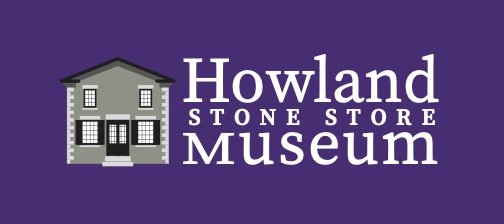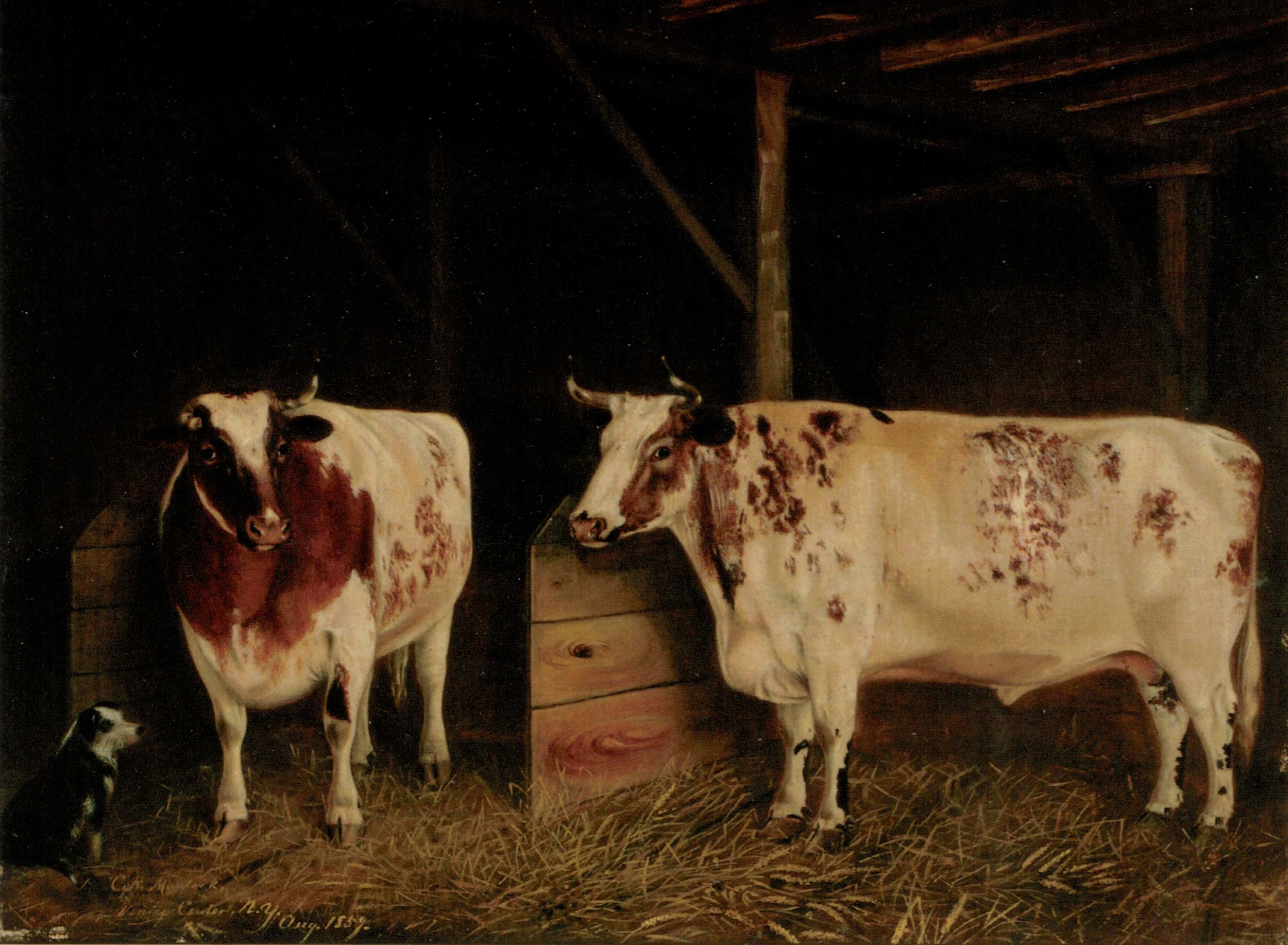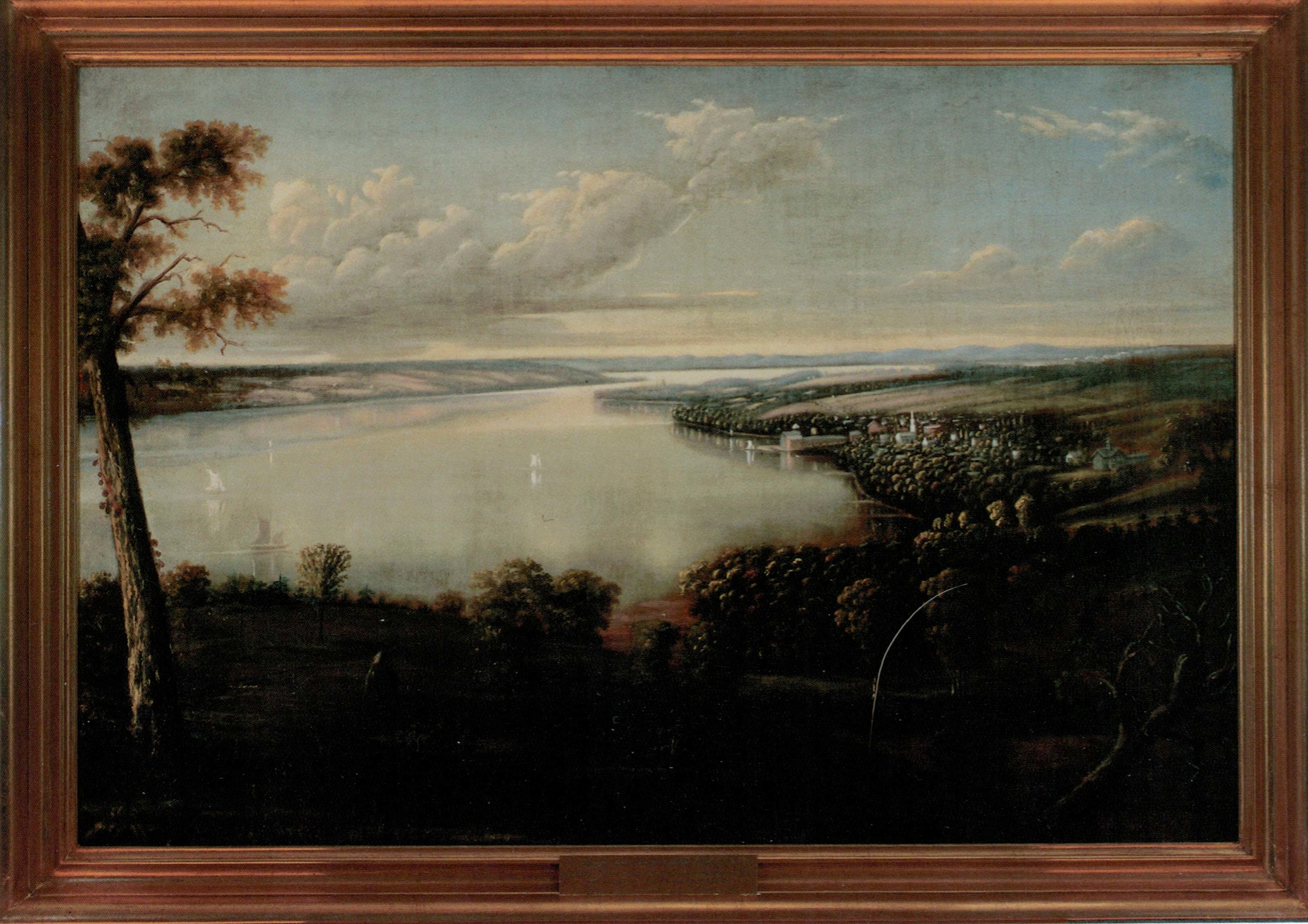WOMEN’S SUFFRAGE POSTERS
Perhaps the nation’s best collection of women’s suffrage posters, political cartoons, drawings and ephemera, this collection offers a fascinating glimpse into the movement’s efforts to persuade and move to action. Additional context is provided by a smaller collection of anti-suffrage materials. View a short clip from a longer video about the museum’s poster collection.
SCHOOLROOM MOTTOES
High on the north wall of the Museum are two boards, about three feet long, with inspirational mottoes. One says “Remember thy Creator in the days of thy youth,” and the other “What man has done may be done by man.” The mottoes came to Sherwood in 1871 when the first school was established in a local home, and they hung on a schoolroom wall until 2012 – almost 150 years.
Sherwood was a strong Quaker community, and education was a part of the Quaker tradition. The Sherwood family of Samuel and Elizabeth Otis wanted their and other local children (boys and girls!) to be educated, but there was no school. They contacted Hepsibeth Hussey, a teacher in Nantucket, Massachusetts, with connections to the Quaker community in Sherwood. She agreed to come if there were 10 children to teach and brought the mottoes. These mottoes were intended to inspire those first students and all their successors. Her first school was a house on the corner of Route 34B and the Scipio-Venice Town Line Road. The school buildings changed and were variously named – Sherwood Academy, Sherwood Select School, Sherwood Central School, Emily Howland Building of Southern Cayuga Central School. After that building was closed because of demographics, the Board of Education gave the mottoes to the Museum.
MUSEUM OF CURIOSITIES
The HSSM contains a “museum within a museum” –our “cabinet of curiosities.” Cabinets of Curiosities (sometimes an entire room) have been around for centuries. By definition a Cabinet of Curiosities is a collection of objects, often categorized by natural history, geology, ethnography, archaeology, and religious or historic relics; for the most part they were limited to individuals who could afford to create and maintain them.
Both Emily Howland and her niece Isabel, neither of whom married, had the wherewithal to travel all over the world during the late 19th and early 20th centuries. They brought back to Sherwood a vast collection of artifacts which they organized, meticulously labeled, and housed in glass cabinets. That collection remains virtually intact in the upper story of the HSSM today.
Visit the HSSM to see if you can spot the sea grass from the Sandwich Islands (now Hawaii), pistachio nuts from the Holy Land, a Syrian horse shoe, a Confederate $2 bill, or locusts that were considered an Arab delicacy. Then there’s the 100+ year old pita (Arab bread)……… And, though it’s not technically part of the Cabinet of Curiosities, there’s the piece of Susan B. Anthony’s birthday cake from 1898! Truly curious!
PAINTINGS
Celia R. Murdock of Venice Center painted her father's prize winning oxen in 1857. She realistically portrays the Durham cattle against a dark background with diagonal barn beams and adds a small dog in the left foreground. Murdock paints from observation perhaps referencing Dutch and English livestock works, but draws the viewer into the barn by positioning the oxen in the foreground, one facing the viewer and one from the side. It is a welcoming picture. Murdock devoted her life to painting, traveling to France in her forties and is said to be the first American woman to be accepted into the Paris Salon exhibitions with her pastoral sheep paintings "La Barriere" and "May in an Old Land".
“View from Pumpkin Hill” is a fairly large landscape in oil dating from around 1860 or 1870. It portrays a scene looking north over Cayuga Lake from Pumpkin Hill south of Aurora. It is a tranquil, somewhat idealized scene that draws on the traditions of the Hudson River School and the Illuminists. The brush strokes are smooth and hidden contributing to the calm, hazy, Eden-like atmosphere. This is a painting to grace the parlor of a prosperous landowner while celebrating the beauties of the area.
LEDGERS AND BOXES
Paper records are an important part of the Howland Stone Store Museum holdings, not as striking as suffrage posters but potentially interesting and also critical for a serious researcher.
The business ledgers of the Store provide a down-to-earth look into life around the Sherwood area during much of the nineteenth century. What families lived there? What did residents have to buy and— by their absence of purchases in the records – not buy? What changed?
An 1857 ledger, for example lists “Hermon Phillips” as a patron. Phillips and his family had escaped from slavery and settled in Sherwood with the help of Slocum Howland. Typically, he purchased oil and flour; there are entries for sandpaper, shoes, and alcohol. Augustus Howland was a member of the upper socio-economic level, and his account includes figs, oranges, gloves, muslim, and whitewash.
Warning: many of the ledgers are extraordinarily difficult to read. The handwriting is elegant, unlike anything one would create today. However, the combination of the writing being full of flourishes and the ledgers themselves being very faded creates a major challenge. Although the ledgers are too fragile for casual examination, we will have photographs of some of the pages. They can be like a puzzle – try to figure out the items.
Archival Boxes. Boxes and boxes and boxes. We have boxes of Howland family records, from political letters to a ticket stub from the Atlantic City boardwalk rides to personal correspondence. There are investment records and school trustee papers and railroad investments.
Other boxes include a Manual for Political Equality Clubs and Quaker marriage certificates and a variety of photographs and notes on family travels.
The boxes are not available for general browsing. We have inventories and finding guides and will gladly help anyone who has a particular interest.
TICKET TO FREEDOM!
Before the Civil War anti-slavery northerners helped slaves trying to escape. The various escape routes were referred to as the “Underground Railroad.” This was dangerous for both the slaves and their helpers. Sometimes the slaves were given short written directions. Come see the actual “ticket” brought by two slaves escaping from Maryland by way of Owego and Ithaca in April 1840. The ticket was addressed to Slocum Howland, and the slaves reached safety at his home in Sherwood.







